Deflections - Lecture notes 2 PDF

| Title | Deflections - Lecture notes 2 |
|---|---|
| Course | Structural Analysis I |
| Institution | National University of Sciences and Technology |
| Pages | 41 |
| File Size | 1.7 MB |
| File Type | |
| Total Downloads | 32 |
| Total Views | 118 |
Summary
deflection...
Description
Chapter 9
Deflections of Beams
9.1 Introduction in this chapter, we describe methods for determining the equation of the deflection curve of beams and finding deflection and slope at specific points along the axis of the beam
9.2 Differential Equations of the Deflection Curve consider a cantilever beam with a concentrated load acting upward at the free end the deflection in the
y
v
is the displacement
direction
the angle of rotation
of the axis
(also called slope) is the angle between the x
axis and the tangent to the deflection
curve point
m1
is located at distance
x
point
m2
is located at distance
x + dx
slope at
m1
is
slope at
m2
is
+ d
denote
O'
the center of curvature and
the radius of curvature, then d
=
ds
and the curvature
is
1
1
=
=
C
d C
ds
the sign convention is pictured in figure slope of the deflection curve dv C
tan
=
or
dv tan-1 C dx
=
dx for
small
=
ds j dx
1
d =
C
=
C
C
dx 2
d
d v
=
C
then
dv =
dx
1
=
tan j ,
and
C
cos j 1
CC
dx2
dx
if the materials of the beam is linear elastic 1
=
M =
C
[chapter 5]
C
EI
then the differential equation of the deflection curve is obtained d
C
2
dv =
CC
dx
dx2
M =
C
EI
it can be integrated to find dM ∵
CC
then
CC
dx3
and v dV
=
V
dx d 3v
CC
=
-q
=
q -C EI
dx =
V
d 4v
C
CC
EI
dx4
2
sign conventions for
M,
V
and
q
are shown
the above equations can be written in a simple form EIv"
=
M
EIv"'
=
V
EIv""
=
-q
this equations are valid only when Hooke's law applies and when the slope and the deflection are very small for nonprismatic beam [I = I(x)], the equations are
CC d 2v
EIx
=
2
M
dx
C (EI CC)
dM CC
d 2v
d
x
dx
=
2
dx
d2
CC (EI CC) dx
2
dx
V
dx
d 2v
x
=
CC dV
=
2
=
-q
dx
the exact expression for curvature can be derived
=
C1
=
v" CCCCC
[1 + (v')2]3/2
9.3 Deflections by Integration of the Bending-Moment Equation substitute the expression of M(x)
into
the deflection equation then integrating to satisfy (i) boundary conditions (ii) continuity conditions (iii) symmetry conditions to obtain the slope
and the
3
deflection
v
of the beam
this method is called method of successive integration
Example 9-1 determine the deflection of beam supporting a uniform load of intensity max
also determine
A,
and
flexural rigidity of the beam is
AB q
B EI
bending moment in the beam is M
=
CC qLx
-
2
CC q x2 2
differential equation of the deflection curve
CC
EI v"
=
CC
q x2
qLx
-
2
2
Then qLx2
EI v'
=
CC
q x3
-
4
∵ the beam is symmetry,
CCCC
CC ∴
qL(L/2)2
0
=
4
+
C1
6
= v' = 0
CCCC
at
q (L/2) 3
-
6
4
+
C1
x=L/2
then
= q L3 / 24
C1
the equation of slope is v'
q - CCC (L3 24 EI
=
6 L x2
-
+
4 x3)
integrating again, it is obtained v
q - CCC (L3 x 24 EI
=
boundary condition : v thus we have
2 L x3
-
= 0
C2
=
+
at
x4)
+
C2
x
=
0
0
then the equation of deflection is v
q - CCC (L3 x 24 EI
=
max
maximum deflection max
=
L
- v(C) 2
=
2 L x3
-
x4)
+
occurs at center 5 q L4
(x
=
L/2)
(↓)
CCC
384 EI
the maximum angle of rotation occurs at the supports of the beam q L3 A
=
v'(0)
=
- CCC 24 EI
( )
q L3 and
B
=
v'(L)
=
CCC
24 EI
5
( )
Example 9-2 determine the equation of deflection curve for a cantilever beam AB to a uniform load of intensity B
also determine
subjected
q B
and
at the free end
flexural rigidity of the beam is
EI
bending moment in the beam q L2 M
=
q x2
- CC 2
+
qLx
-
CC
2
q L2 EIv"
=
q x2
- CC 2
+
=
C1 v'
=
=
qx - CC 6EI
CC
qLx2
- CC 2
boundary condition
-
2
qL2x EIy'
qLx
+
q x3 -
CC
v'
=
+
CC
2
C1
6 =
0
at
x =
0
0 (3 L2
-
3Lx
+
x2)
integrating again to obtain the deflection curve qx2 v
=
- CC 24EI
boundary condition C2
=
(6 L2
v
-
4Lx
= 0
+
at
0
6
x2)
x
+
= 0
C2
then qx2 v
=
(6 L2
- CC 24EI
-
4Lx
x2)
+
q L3 max
=
B
=
v'(L)
=
- CC ( ) 6 EI q L4
max
=
- B
=
- v(L)
=
CC
(↓)
8 EI
Example 9-4 determine the equation of deflection curve,
A,
B,
max
and
flexural rigidity of the beam is
C EI
bending moments of the beam M
Pbx
=
CC
(0 ≦ x ≦ a)
L Pbx M = CC - P (x - a) (a ≦ x ≦ L) L differential equations of the deflection curve EIv"
=
Pbx CC
(0 ≦ x ≦ a)
L Pbx EIv" = CC - P (x - a) (a ≦ x ≦ L) L integrating to obtain
7
CC
Pbx2
EIv'
=
+
C1 (0 ≦ x ≦ a)
-
CCCC
+
C1 x
C3
2L
CC
Pbx2
EIv'
=
P(x - a)2
2L
C2
(a ≦ x ≦ L)
2
2nd integration to obtain EIv
CC
Pbx3
=
+
+
(0 ≦ x ≦ a)
6L
EIv
CC - CCCC + C x
=
Pbx3
P(x - a)3
6L
6
2
(a ≦ x ≦ L)
+ C4
boundary conditions (i)
v(0)
=
0
(ii)
y(L)
=
0
continuity conditions (iii)
(i) (ii)
v'(a-)
v(0)
=
=
v(L)
v'(a+)
(iv)
v(a-)
=>
C3
= 0
=>
CC - CC + C L + C
0
=
0
PbL3
Pb3
2
6
(iii)
-
v'(a )
=
+
v'(a )
= v(a+)
=>
4
(iv)
-
v(a )
= =
CC Pba2
+
C1
=
=
CC
Pba2
+
C2
2L
C2 +
v(a )
=>
CC + C a + C = CC + C a + Pba3
Pba3
1
6L
C3
0
6
2L
C1
=
C4 8
3
2
6L
C4
then we have Pb (L2 - b2) C1
=
C2
=
- CCCCC 6L
C3
=
C4
=
0
thus the equations of slope and deflection are v'
v'
v
v
Pb - CC (L2 - b2 - 3x2) 6LEI
=
Pb
=
=
=
2
2
(0 ≦ x ≦ a)
2
- CC (L - b - 3x ) 6LEI
P(x - a )2
-
2EI
Pbx - CC (L2 - b2 - x2) 6LEI Pbx
2
2
2
- CC (L - b - x ) 6LEI
(a ≦ x ≦ L)
CCCC
(0 ≦ x ≦ a)
-
P(x - a )3
(a ≦ x ≦ L)
CCCC
6EI
angles of rotation at supports A
=
v'(0)
=
Pab(L + b) - CCCCC 6LEI
B
=
v'(L)
=
CCCCC
( )
Pab(L + a) ( )
6LEI ∵
A
is function of
a (or b), to find
(A)max,
set
dA / db = 0
Pb(L2 - b2) A
=
dA / db
- CCCCC 6LEI =
0
=> L2 - 3b2
9
=
0
=> b
=
L/ 3
PL2 3 (A)max
=
for maximum
- CCCC 27 EI occurs at
x1,
if
a
>
b,
x1
(a
≧
L2 - b2
dv =
C
0
=>
x1
=
CCC
dx
<
a
b)
3
max
=
- v(x1)
Pb(L2 - b2)3/2
=
(↓)
CCCCC
9 3 LEI at
x
=
C
L/2
=
- v(L/2)
Pb(3L2 - 4b2)
=
CCCCCC
(↓)
48 EI ∵ the maximum deflection always occurs near the midpoint, ∴ C gives a good approximation of the max in most case, the error is less than an important special case is P v'
=
CC
(L2 - 4x2)
a
3% =
b
=
L/2
(0 ≦ x ≦ L/2)
16EI P v
=
CC
(3L2 - 4x2) (0 ≦ x ≦ L/2)
48EI v'
and A
v
are symmetric with respect to B
=
PL2
=
CC
16EI max
=
C
PL3 =
CC
48EI
10
x
=
L/2
9.4 Deflections by Integration of Shear-Force and Load Equations the procedure is similar to that for the bending moment equation except that more integrations are required if we begin from the load equation, which is of fourth order, four integrations are needed
Example 9-4 determine the equation of deflection curve for the cantilever beam
AB
supporting a
triangularly distributed load of maximum intensity
q0 B
also determine
B
and
flexural rigidity of the beam is
EI
CCCC q0 (L - x)
q
=
L
CCCC q0 (L - x)
EIv""
=
-q
=
-
L
the first integration gives EIv"'
=
-
CCCC
+
V
=> C1
q0 (L - x)
2
C1
2L
∵
thus
v"'(L)
EIv"'
=
=
=
-
0
CCCC
q0 (L - x)2 2L
11
=
0
2nd integration EIv" ∵
q0 (L - x)3
=
- CCCC 6L
v"(L)
thus
=
EIv"
M
=
+
C2
0
=>
C2
=
0
q0 (L - x)3
=
- CCCC 6L
3rd and 4th integrations to obtain the slope and deflection EIv'
=
q0 (L - x)
4
+
C3
- CCCC 120L
+
C3 x
+
C4
boundary conditions : v'(0)
=
v(0)
=
0
EIv
q0 (L - x)5
=
the constants C3
=
- CCCC 24L
C3
and
q0L3
- CC 24
C4
can be obtained
C4
q0L4
=
CC
120
then the slope and deflection of the beam are v'
=
q0x - CCC (4L3 24LEI
6L2x
-
4Lx2
+
x3)
-
2
v
=
q0x
- CCC (10L3 120LEI
10L2x
-
+ 5Lx2
3
B
q0L =
v'(L)
=
- CCC 24 EI
( )
12
-
x3)
B
=
- v(L)
q0L4
=
(↓ )
CCC
30 EI
Example 9-5 an overhanging beam concentrated load
P
ABC
with a
applied at the end
determine the equation of deflection C
curve and the deflection
at the end
flexural rigidity of the beam is
EI
the shear forces in parts AB and BC are V
=
P -C 2
(0 < x < L)
V
=
P
3L (L < x < C) 2
the third order differential equations are EIv'"
=
P - C (0 < x < L) 2
EIv'"
=
P
3L (L < x < C) 2
bending moment in the beam can be obtained by integration M
=
EIv"
=
Px -C + 2
M
=
EIv"
=
Px
+
C1 C2
13
(0 ≦ x ≦ L) (L ≦ x ≦
3L ) 2
C
boundary conditions : v"(0) we get
C1
=
0
=
v"(3L/2)
C2
=
0
3PL - CC 2
=
therefore the bending moment equations are M
=
EIv"
=
Px -C 2
M
=
EIv"
=
P(3L - 2x) - CCCCC 2
(0 ≦ x ≦ L)
(L ≦ x ≦
3L ) 2
C
2nd integration to obtain the slope of the beam EIv'
=
EIv'
=
Px2
- CC 4
+
Px(3L - x) - CCCCC 2
continuity condition : PL2 - CC 4 then
C4
(0 ≦ x ≦ L)
C3
+
=
C3 C3
=
+
C4 (L ≦ x ≦
+
v'(L-)
=
- PL2
+ C4
3L ) 2
C
v'(L+)
3PL2 CC
4 the 3rd integration gives EIv
EIv
=
=
Px3
- CC 12
+
C3 x
Px2(9L - 2x)
- CCCCC 12
+
+
C4 x
14
(0 ≦ x ≦ L)
C5
+
C6
(L ≦ x ≦
3L C) 2
boundary conditions :
v(0)
v(L-)
=
=
0
we obtain C5
=
0
C3
PL2
=
CC
12 and then
C4
=
5PL2 CC
6 the last boundary condition : v(L+) then
...
Similar Free PDFs

Deflections - Lecture notes 2
- 41 Pages

Lecture notes, lecture 2
- 3 Pages

2 - Lecture notes 2
- 5 Pages

Lecture notes, lecture Chapter 2
- 11 Pages
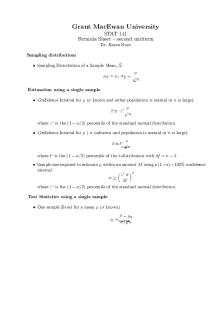
Lecture notes, lecture formula 2
- 1 Pages

2 Biodiversity - Lecture notes 2
- 33 Pages

Chapter 2 - Lecture notes 2
- 30 Pages
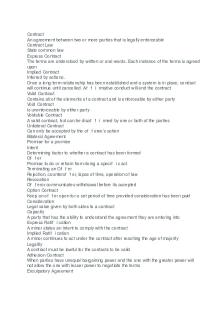
Blaw 2 - Lecture notes 2
- 4 Pages

Chapter 2 - Lecture notes 2
- 4 Pages
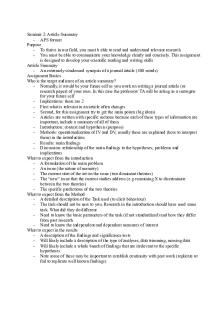
Seminar 2 - Lecture notes 2
- 2 Pages
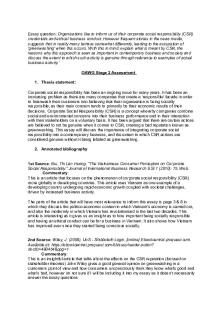
Stage 2 - Lecture notes 2
- 3 Pages
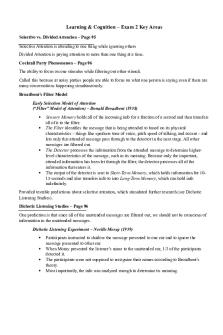
Exam 2 - Lecture notes 2
- 5 Pages
Popular Institutions
- Tinajero National High School - Annex
- Politeknik Caltex Riau
- Yokohama City University
- SGT University
- University of Al-Qadisiyah
- Divine Word College of Vigan
- Techniek College Rotterdam
- Universidade de Santiago
- Universiti Teknologi MARA Cawangan Johor Kampus Pasir Gudang
- Poltekkes Kemenkes Yogyakarta
- Baguio City National High School
- Colegio san marcos
- preparatoria uno
- Centro de Bachillerato Tecnológico Industrial y de Servicios No. 107
- Dalian Maritime University
- Quang Trung Secondary School
- Colegio Tecnológico en Informática
- Corporación Regional de Educación Superior
- Grupo CEDVA
- Dar Al Uloom University
- Centro de Estudios Preuniversitarios de la Universidad Nacional de Ingeniería
- 上智大学
- Aakash International School, Nuna Majara
- San Felipe Neri Catholic School
- Kang Chiao International School - New Taipei City
- Misamis Occidental National High School
- Institución Educativa Escuela Normal Juan Ladrilleros
- Kolehiyo ng Pantukan
- Batanes State College
- Instituto Continental
- Sekolah Menengah Kejuruan Kesehatan Kaltara (Tarakan)
- Colegio de La Inmaculada Concepcion - Cebu



